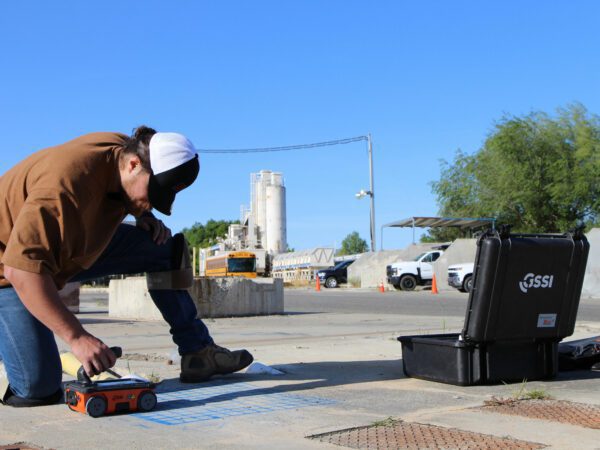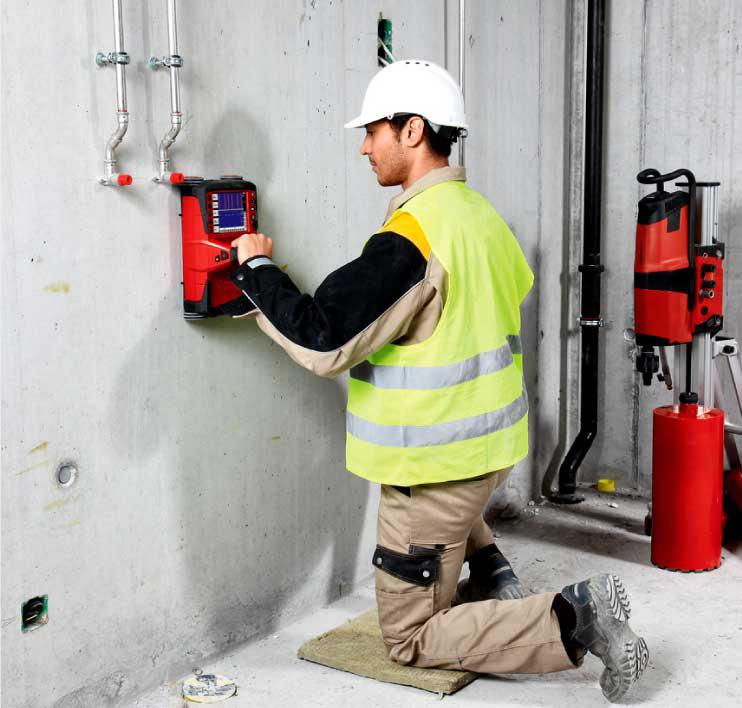Harnessing Advancement: RainierGPR Concrete Scanning for Accuracy Outcomes
Harnessing Advancement: RainierGPR Concrete Scanning for Accuracy Outcomes
Blog Article
Harness the Strategic Side of Concrete Scanning for Unparalleled Job Success and Top Quality Assurance
In the realm of modern construction and infrastructure growth, the usage of concrete scanning technology has actually arised as a crucial tool for making certain task success and keeping quality standards. The real power of concrete scanning exists not only in its capability to boost task end results however also in its capability to reinvent conventional practices, establishing a brand-new standard for accuracy and performance in the construction market.
The Importance of Concrete Scanning
Concrete scanning is an essential action in building and construction jobs to make sure the security and honesty of frameworks. By making use of different scanning modern technologies such as Ground Passing Through Radar (GPR) and electromagnetic induction, construction groups can non-destructively assess the subsurface of concrete structures to identify possible risks like rebar, avenues, or post-tension cables. This information is important for project contractors, designers, and managers to make educated decisions and prevent expensive errors throughout the building and construction process.
One of the key reasons that concrete scanning is so vital is its ability to avoid crashes and injuries on the building and construction site. Accidentally puncturing an online electric avenue or harmful post-tension cable televisions can have catastrophic effects, not only in regards to safety but also in terms of task delays and economic effects. By conducting complete concrete scanning before any type of drilling, cutting, or coring tasks, building teams can reduce threats and develop a safer working setting for everyone involved.
In enhancement to safety and security considerations, concrete scanning also plays a vital function in making certain the long-lasting toughness and quality of the structure. By spotting any kind of defects or anomalies hidden underneath the surface, such as spaces or delamination, very early treatment can be carried out to deal with these concerns before they intensify right into more significant issues. Inevitably, spending in concrete scanning is a proactive step that can conserve time, cash, and sources in the future, while likewise promoting the highest possible standards of construction quality.
Advanced Modern Technology for Accurate Outcomes

By incorporating these innovative innovations right into concrete scanning practices, building and construction teams can streamline workflows, reduce job hold-ups, and guarantee the general high quality and success of the project. The accuracy and efficiency used by these tools contribute substantially to the project's success by assisting in informed decision-making and developing top quality guarantee steps.
Enhancing Job Performance and Timelines

Additionally, concrete scanning enables teams to recognize potential threats and architectural weaknesses early, permitting timely remediation and protecting over here against accidents that might thwart job timelines. The real-time data given by scanning tools helps with educated decision-making, causing smoother control among various professions and stakeholders. This improved cooperation reduces disputes, boosts productivity, and ultimately increases task shipment.
Furthermore, by proactively dealing with concerns through concrete scanning, building and construction teams can stick to schedules better, minimize downtime, and enhance source allowance. The ability to find hidden barriers and confirm structural integrity efficiently adds to total project performance and timelines, making certain successful results and customer complete satisfaction.
Ensuring Safety And Security and Threat Mitigation

Risk reduction approaches can be enhanced with the thorough details supplied by concrete scanning, allowing task teams to make educated decisions that reduce the possibility of unexpected incidents. Furthermore, by precisely drawing up subsurface conditions, contractors can avoid costly rework, hold-ups, and damage to existing frameworks, better adding to total task safety and security and success. Executing concrete scanning as a regular practice not only guarantees a safer job environment but also infuses self-confidence in stakeholders relating to the project's commitment to high quality and risk administration.
Quality Assurance Via Concrete Scanning
Concrete scanning plays an essential role in supporting quality control criteria within construction tasks. By making use of sophisticated scanning innovations such as Ground Permeating Radar (GPR) and Concrete X-ray, job supervisors and designers can make sure the stability and high quality of concrete structures. Through concrete scanning, prospective defects, such as spaces, cracks, or strengthening bar blockage, can be found non-destructively, permitting timely interventions to maintain the structural stability of the job.
Quality control with concrete scanning not just helps in recognizing existing concerns however also makes it possible for proactive steps to avoid future troubles that might endanger the safety and security Continue and long life of the framework. By carrying out extensive scans at crucial phases of construction, teams can confirm the precision of architectural plans, confirm the placement of important aspects, and resolve any kind of variances immediately. This positive method minimizes rework, decreases costly hold-ups, and eventually results in the delivery of top quality, long lasting frameworks that meet or go beyond sector criteria.
Conclusion
Finally, concrete scanning plays a critical function in making sure task success, efficiency, top quality, and safety assurance. By making use of advanced innovation for specific outcomes, building tasks can be finished with greater accuracy and within timelines. The tactical edge provided by concrete scanning permits aggressive risk mitigation and improves total project administration. Incorporating concrete scanning into building processes is necessary for attaining unrivaled success and making certain quality outcomes - RainierGPR Concrete Scanning.
In the realm of modern-day construction and framework advancement, the use of concrete scanning innovation has emerged as a crucial device for making certain job success and preserving top quality standards. By including these advanced modern technologies right into concrete scanning methods, construction groups can simplify workflows, lower job hold-ups, and guarantee the total top quality and success of the job.Offered the important nature of project performance and timelines in building and construction monitoring, the emphasis currently shifts towards making sure security and mitigating dangers within the job environment.Concrete scanning plays an essential role in maintaining high quality assurance criteria within building projects. By using sophisticated scanning technologies such as Ground Penetrating Radar (GPR) and Concrete X-ray, task managers and engineers can make certain the integrity and quality of concrete structures.
Report this page